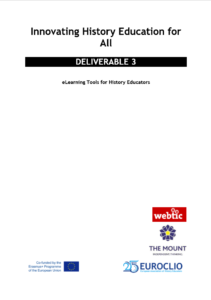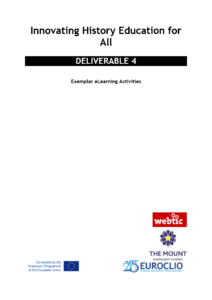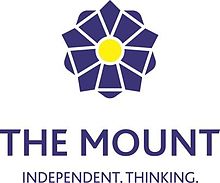Project Aims
The IHEA project aimed to promote high-quality history, heritage, and citizenship education in Europe through the development, testing and implementation of digital learning resources and by researching what is needed in terms of policy and practice.
In particular, the project:
[su_list icon=”icon: caret-right”]- Enabled educators to create their own online learning activities and tools specifically designed to promote historical thinking and transversal competences.
- Fostered competence-based approaches to the subject based on critical thinking and the ability to analyse content in a balanced way, question and compare interpretations, assess evidence and make independent judgments.
- Supported a large group of educators to become more digitally confident, to act as multipliers with their colleagues, and to transmit their skills to their students.
Outcomes
The consortium worked in the project to develop the following outputs:
[su_accordion] [su_spoiler title=”Needs Assessment”]Jasik K., Lorenc J., Mrozowski K., Staniszewski J., Walczak A., (2016), Innovating History Education for All – Needs Assessment, Warsaw. – The needs assessment, made by the Institute for Educational Research in Warsaw, helped to identify several problems that educators encounter when it comes to using ICT in history education and to set priorities for the development of new tools in the Innovating History Education for All project. The research consisted of a preliminary questionnaire, two focus group interviews, a survey (translated in 18 languages) which was completed by 235 educators across Europe and individual in-depth interviews. The needs assessment gathered data that helped the project team to determine what kind of tools and exemplar learning activities are most needed, how teachers are likely to use them in practice, and what therefore needs to be taken into account during the development page. This report describes in detail what methodology was used, lists the main challenges that the researchers identified and includes a literature list that can be used for further reading. (Click image to download .pdf)
The annex to the report is structured around strong and weak sides of currently available tools, the way teachers present their tasks to the students and how they ideally provide their students with feedback.
[/su_spoiler] [su_spoiler title=”Cross-Border Historical Source Collections”]The source collections are designed to help educators put national perspectives into a wider context and stimulate mutual understanding amongst young students. History educators often experience obstacles in searching and selecting sources. It takes a lot of time to find sources that provide multiple perspectives, and translation is often not provided. The transnational sources collections developed in this project, help educators overcoming this challenge.
The following cross-border source collections have been developed
- The Inter-war years (between WW1 and WW2)
- Recruitment & Conscription (part of “How WW2 was fought”)
- War on Land (part of “How WW2 was fought”)
- Civilian Life in Occupied Lands (part of “How WW2 was fought”)
- Life on the Home Front (part of “How WW2 was fought”)
- Intelligence War (part of “How WW2 was fought”)
- War of words (part of “How WW2 was fought”)
- War at Sea (part of “How WW2 was fought”)
- Extermination Programmes (part of “Crimes against Humanity during WW2”)
- Deportations & forced labour (part of “Crimes against Humanity during WW2”)
- People on the Move (part of “The Aftermath of WW2”)
- Devastation & Reconstruction (part of “The Aftermath of WW2”)
- The European Project (part of “From Hot to Cold War”)
- From Teheran to Potsdam (part of “From Hot to Cold War”)
- Stalin and the USSR 1945-1956 (part of “From Hot to Cold War”)
- US policy of containment (part of “From Hot to Cold War”)
- Two Germanies (part of “From Hot to Cold War”)
- The Berlin Blockade (part of “From Hot to Cold War”)
- Cold War in Asia (part of “From Hot to Cold War”)
- Commemoration (part of “From Hot to Cold War”)
 The eLearning Tools are Building blocks that can be used to create eLearning Activities with the eActivity Builder on www.historiana.eu. Each building block has its own functionality, they can be combined and put in an order of choice by dragging.
The eLearning Tools are Building blocks that can be used to create eLearning Activities with the eActivity Builder on www.historiana.eu. Each building block has its own functionality, they can be combined and put in an order of choice by dragging.
The following building blocks have been developed:
The “text” block is designed to present information to students, without any further interaction. Students will see the text that you provided here. The “text” building block is very suited to provide the information that students need to make sense of the eLearning Activity, to add more information after an activity, and to help students understand how the different parts of an eLearning Activity connect.
The “question” block has the same functionality as the text box, but in addition allows students to type an answer. Add a question, and some more information if needed. Students see the question and the other information, and add their answer in a text box. The answers of the students are saved and can be accessed by the teacher who shared the link with them.
The “embed” block, is designed to include information that is available from outside Historiana, such as videos, timelines or websites. To include this information, copy the URL or the embed code of the website in the relevant space.
The “sorting” block allows users to choose a background, select and remove sources, and add and edit accompanying texts. Students can read the texts and move the sources on the background. Students need to use their knowledge and or judgement in deciding where to place each source.
The “prioritising” block allows users to select and remove sources, and add and edit accompanying texts. Students can move the sources, read the accompanying texts and adjust the size of each source.
The main innovation within this project is the development of applications that educators can use to create their own online learning activities in the language of their choice, and that the building blocks are made specifically to stimulate the re-use of digital heritage in history education, and to promote historical and critical thinking skills.
[/su_spoiler] [su_spoiler title=”Exemplar Online Learning Activities”] The exemplar learning activities were designed to demonstrate how the eLearning tools on historiana.eu can be used to promote historical thinking and multiperspectivity. In total 12 exemplar learning activities were developed, with at least one for each tool. The learning activities have been designed to stimulate students to think critically on issues related to history and heritage and to acquire key competences while simultaneously gaining knowledge and understanding of specific events and long term developments in history. The learning activities have been subject to a process of quality control, including piloting, peer-review and editing before they were included on Historiana.
The exemplar learning activities were designed to demonstrate how the eLearning tools on historiana.eu can be used to promote historical thinking and multiperspectivity. In total 12 exemplar learning activities were developed, with at least one for each tool. The learning activities have been designed to stimulate students to think critically on issues related to history and heritage and to acquire key competences while simultaneously gaining knowledge and understanding of specific events and long term developments in history. The learning activities have been subject to a process of quality control, including piloting, peer-review and editing before they were included on Historiana.
This is a guide to the online learning platform, Historiana. It is a straightforward step by step guide which is available in 24 different languages spoken in the European Union. It is to help educators understand how Historiana works and how to use it as a tool in their teaching.
CLICK HERE TO OBTAIN THE GUIDE
[/su_spoiler] [su_spoiler title=”A Report on Educational Policies and Curricula”] Tribukait, M., Baier, K., Grzempa, H., Loukovitou, A., Sijakovic, R., Tettschlag, N., Vuka, D. (2017), Digital learning in European education policies and history curricula, Braunschweig. – The report on education policies and history curricula, made by the Georg Eckert Institute in Braunschweig, aimed to investigate education policies concerning digital learning in Europe. Specifically, political strategies by the European Union and by seven European states (Albania, Denmark, Germany, Greece, The Netherlands, Poland, and Spain) with regard to the digitisation of schools as well as the roles of curricula as schooling frameworks have been examined. The comparative analysis of the strategic and didactic level of education policy expressed in political guidelines and curricula allowed the study to reflect on the extent the digital resources developed as part of the Innovating History Education for All project correspond with educational policies and curricular respondents, and which challenges are currently being faces in the curricular adaption and implementation of digital learning. The research for this report was carried out between November 2015 and July 2016, the description of the education systems in each case study hence refers to the 2015/2016 academic year. (Click image to download .pdf)
Tribukait, M., Baier, K., Grzempa, H., Loukovitou, A., Sijakovic, R., Tettschlag, N., Vuka, D. (2017), Digital learning in European education policies and history curricula, Braunschweig. – The report on education policies and history curricula, made by the Georg Eckert Institute in Braunschweig, aimed to investigate education policies concerning digital learning in Europe. Specifically, political strategies by the European Union and by seven European states (Albania, Denmark, Germany, Greece, The Netherlands, Poland, and Spain) with regard to the digitisation of schools as well as the roles of curricula as schooling frameworks have been examined. The comparative analysis of the strategic and didactic level of education policy expressed in political guidelines and curricula allowed the study to reflect on the extent the digital resources developed as part of the Innovating History Education for All project correspond with educational policies and curricular respondents, and which challenges are currently being faces in the curricular adaption and implementation of digital learning. The research for this report was carried out between November 2015 and July 2016, the description of the education systems in each case study hence refers to the 2015/2016 academic year. (Click image to download .pdf)
Historiana Labs

The core team has written a series of blog posts that introduce online tools that are freely available and can be used to promote historical thinking. The blog posts are written to help history educators use these tools, by making a selection of the many digital tools that are available and describing how these tools can be used specifically for history education. The process of selecting and testing tools has helped the project to find out what functionalities and ideas work or do not work. Valuable lessons that will help to improve the tools and exemplar online learning activities made in the Innovating History Education for all project. The blog posts are available at labs.historiana.eu.

Erasmus+ Jean Monnet
Core Team
Association for Education and Human Rights Promotion
Richard Kennett
Historical Association
Súsanna Margrét Gestsdóttir
Pascal Tak
Natia Pirtskhalava
Georgian Association of History Educators
Project Partners
Helen Snelson
Mount School York
Jacek Staniszewski, Jakub Lorenc
Educational Research Institute
Maren Tribukait
Georg Eckert Institute
Nique Sanders, Paul Jongsma
Webtic
Public Reports





![[POLAND] IBE](https://euroclio.eu/wp-content/uploads/2015/09/POLAND-IBE-300x66.jpg)








